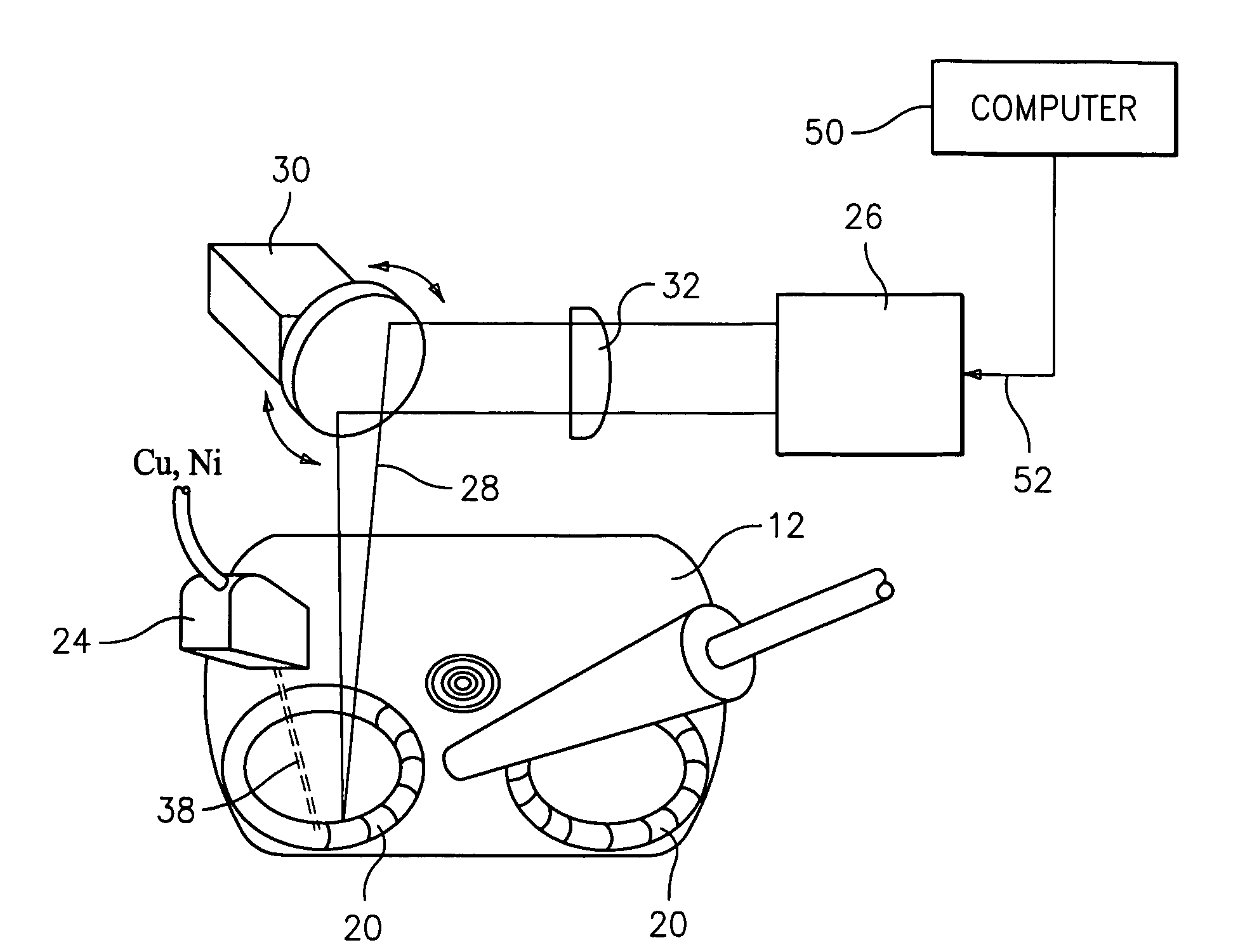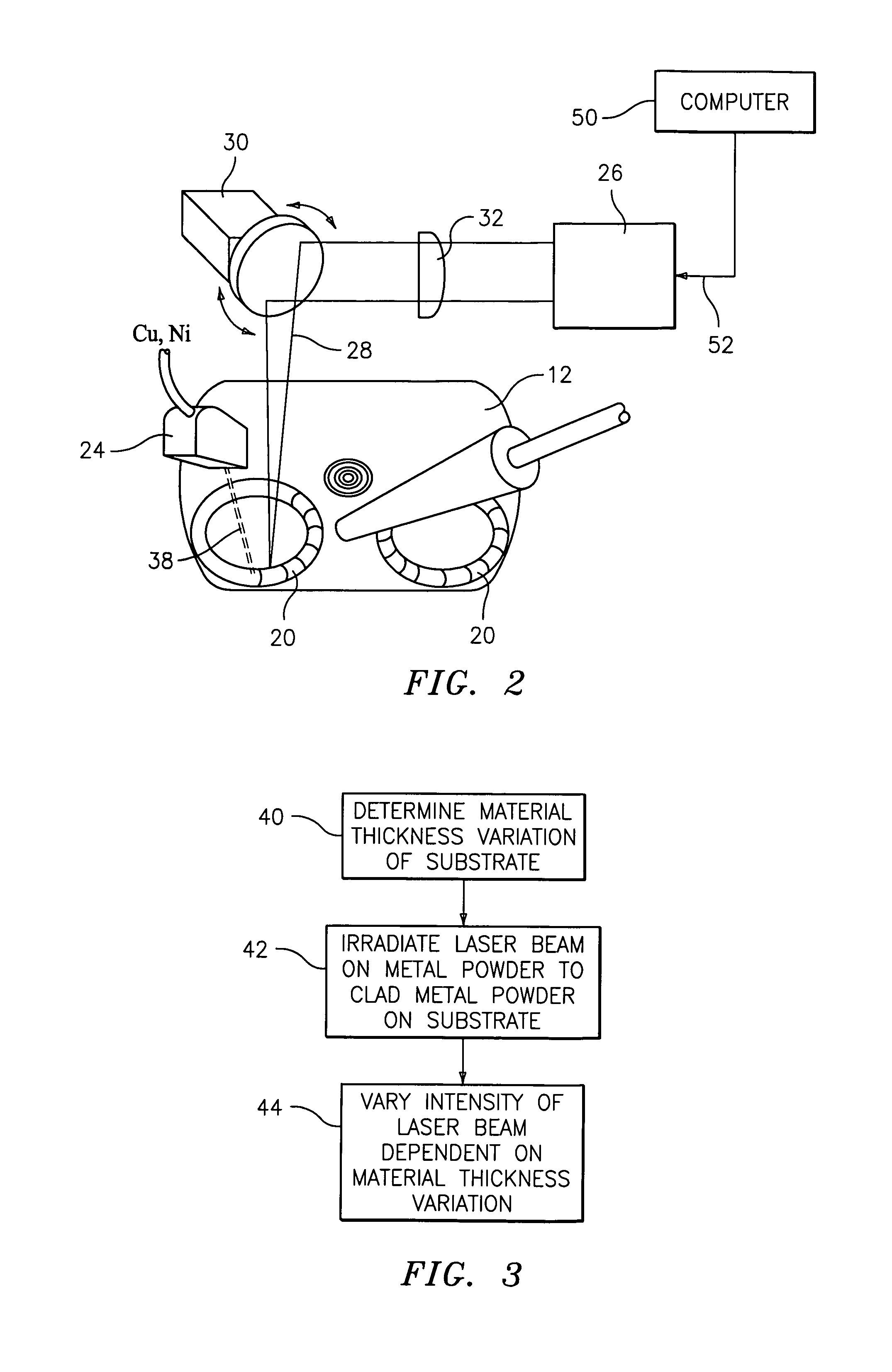Method and system for laser cladding
a laser and cladding technology, applied in the field of laser cladding, can solve the problems of limiting engine combustion parameters, increasing the temperature of the valve in contact with such seats, and limiting the thermal conduction of the valv
- Summary
- Abstract
- Description
- Claims
- Application Information
AI Technical Summary
Problems solved by technology
Method used
Image
Examples
Embodiment Construction
[0021] As used herein, the phrase “laser cladding process” means the laser powder or metal mixture deposition process in which material of a single layer or multiple layers is deposited on a substrate by melting the metal mixture and substrate by a laser to dilute the materials together. The phrase “clad” refers to the deposited layer on the substrate. The process of making clads is called “cladding” and synonymously “coating” when the thickness of the clad is small and the process is used to coat or dilute a surface of the substrate with another material.
[0022]FIG. 1 illustrates an engine cylinder head assembly 10 with four combustion chambers 12 formed therewith. Each chamber 12 shows pre-machined pockets for the cladding deposition of an intake valve seat 14 and an exhaust valve seat 16 with an aperture 18 for threadably receiving a spark plug (not shown). Engine head assembly 10, as illustrated, is an aluminum-based head; however, other metal and metal alloy base materials are ...
PUM
| Property | Measurement | Unit |
|---|---|---|
| width | aaaaa | aaaaa |
| temperature | aaaaa | aaaaa |
| thick | aaaaa | aaaaa |
Abstract
Description
Claims
Application Information
 Login to View More
Login to View More - R&D
- Intellectual Property
- Life Sciences
- Materials
- Tech Scout
- Unparalleled Data Quality
- Higher Quality Content
- 60% Fewer Hallucinations
Browse by: Latest US Patents, China's latest patents, Technical Efficacy Thesaurus, Application Domain, Technology Topic, Popular Technical Reports.
© 2025 PatSnap. All rights reserved.Legal|Privacy policy|Modern Slavery Act Transparency Statement|Sitemap|About US| Contact US: help@patsnap.com



